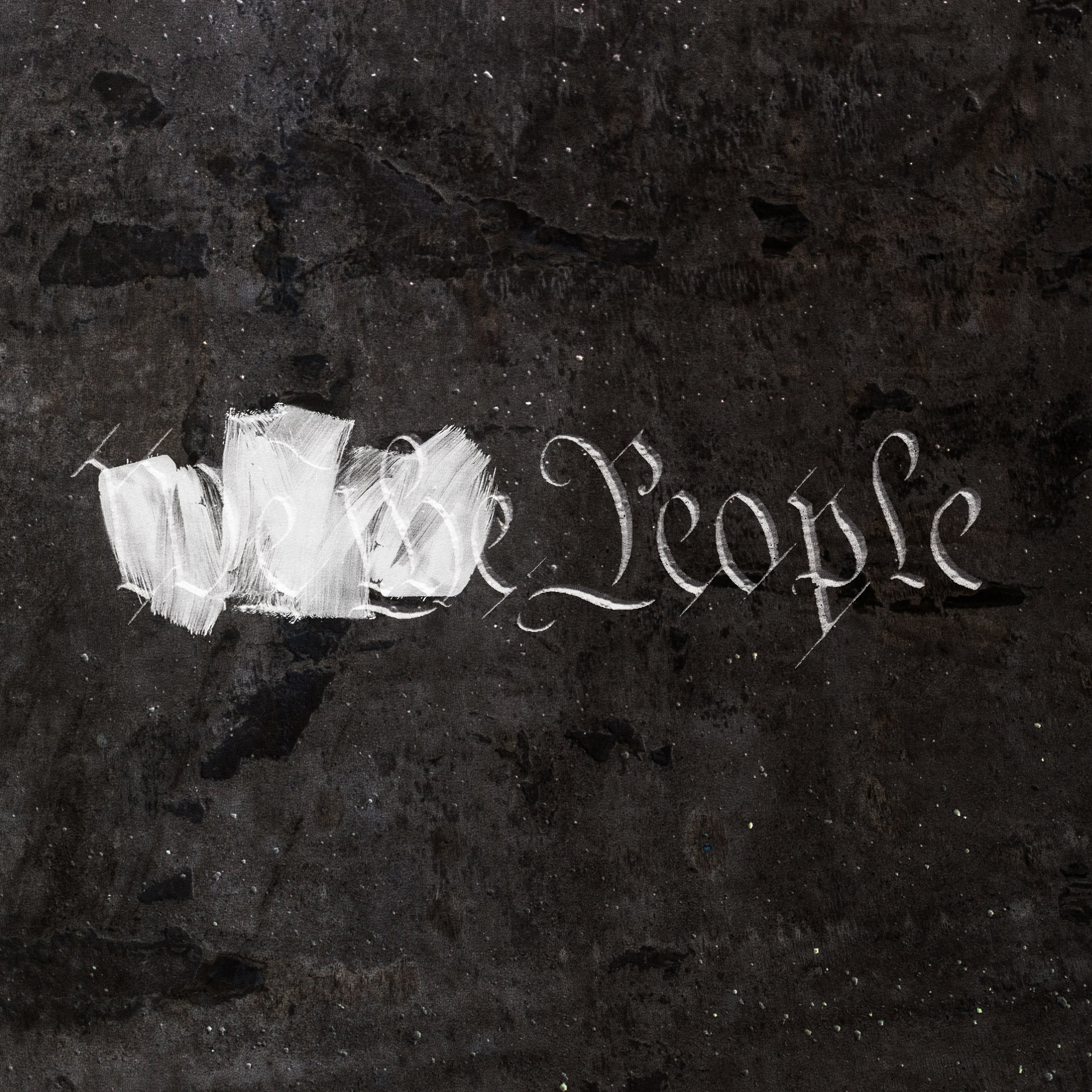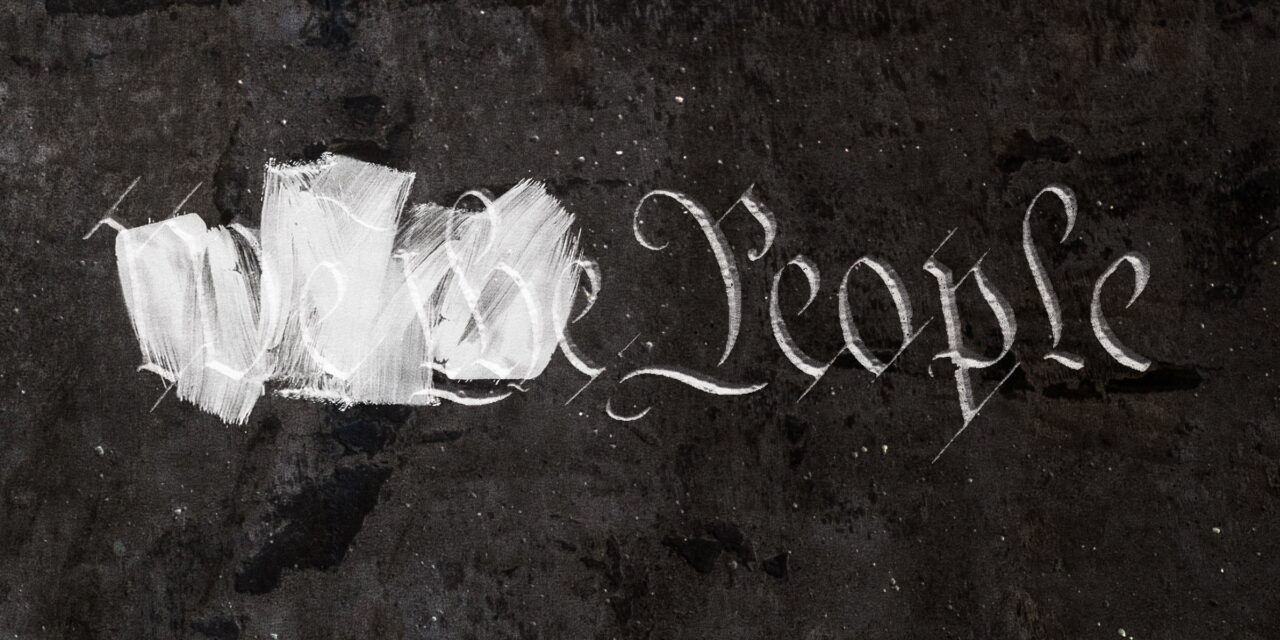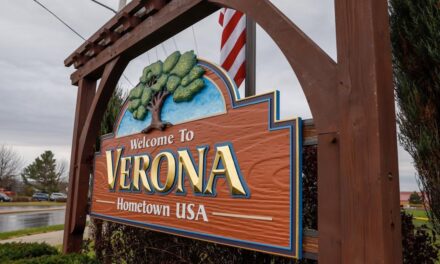How Do We Survive the Constitution?

Donald Trump caught academics off guard. Historians and social scientists had long studied the American right, amassing a vast library on its relationship to race, gender, sex, the media, the Cold War, religion, and big and small business. Less explored was the role of the Constitution, which has always been more friend than foe to the American way of repression. This gap in the literature left the field wide open for experts in authoritarianism abroad and scholars of authoritarianism past.
The most important contribution to this genre was “How Democracies Die,” by the Harvard political scientists Steven Levitsky and Daniel Ziblatt. Studying how democracy was undermined elsewhere, Levitsky and Ziblatt defined the threat of Trumpism as an attack on the Constitution, the rule of law, and institutions. They also claimed that these pillars were less sturdy than people supposed. The Constitution was riddled with holes. Restrictions on Presidential prerogatives were not written down. Institutions designed to check extremists, whether specified in the text (a bicameral legislature) or not (political parties), were vulnerable to extremists.
Most worrisome of all, the ligaments joining these parts, what Levitsky and Ziblatt called “norms,” were frayed. Two norms in particular—tolerance of one’s opponents and forbearance in the exercise of power—were foundational to constitutional democracy. But since 1965, 1994, or 2010 (Levitsky and Ziblatt never settled on a date), those norms had been eroding. Traditionally, élite “gatekeepers” had been the custodians of norms, exercising “peer review” over norm eroders such as Charles Lindbergh and George Wallace. But, in the wake of reforms initiated by the Democrats after 1968 (another date), and later copied by the Republicans, ordinary voters, rather than insider élites, were empowered to choose the Presidential ticket of each party. For a while, the establishment held the line against outsiders. Then came 2016, when Republican leaders failed to stop Trump and rallied behind him.
Within a month of its publication, in January, 2018, “How Democracies Die” hit the Times best-seller list. It’s easy to see why. The book gave voice to liberals who felt betrayed not by their country but by its voters, the gate-crashers who put Trump into power. Levitsky and Ziblatt’s readers believed in norms, trusted élites, and valued institutions, particularly the Supreme Court. They revered the Constitution. The problem was the half of the country that didn’t.
But spring came, as it does, and a new wind began to blow on the left. After the confirmation of Brett Kavanaugh, Neil Gorsuch, and Amy Coney Barrett, progressives started seeing the Court less as a counter to Trumpism than as its conduit. “Defend institutions” may have made sense at the beginning of Trump’s reign. By the end, it sounded like a call to protect the Electoral College and other struts of the right. In 2018, Levitsky and Ziblatt had recommended building coalitions with “red-state Republicans,” abandoning abortion as a litmus test for candidates, and making unnamed but “tough” concessions to moderate voters. Now liberals were ready to play hardball: abolish the filibuster, pack the Court, admit new states to increase Democratic votes in the Senate, and stop all coöperation with the G.O.P.
None of this agenda has been enacted, but its pressures are felt throughout “Tyranny of the Minority,” Levitsky and Ziblatt’s follow-up to “How Democracies Die.” There’s little talk of norms in the new volume. Instead, Levitsky and Ziblatt reaffirm the call to end the filibuster and remake the Court, norm-eroding measures they previously cautioned against. More surprising is their revised view of democracy itself. The primary threat to the system is no longer demagogues; it’s the very institutions that Levitsky and Ziblatt once rallied readers to protect. If the United States is to remain—really, become—a democracy, Americans must stop treating its founding text “as if it were a sacred document.” The Constitution, the deepest norm in American politics, must be eroded.
In 1857, the British historian and statesman Thomas Macaulay set out a grim forecast for the United States. In Britain, political power was safely tucked away in the pockets of élites, who were “deeply interested in the security of property.” America had foolishly handed power to the “discontented” masses. For now, there was land for them to settle in the West. But, when that safety valve failed, the working classes, “none of whom has had more than half a breakfast, or expects to have more than half a dinner,” would vote to strip the minority of their wealth. The Constitution wouldn’t stop them. It was “all sail and no anchor.”
For much of American history, it’s been the reverse: all anchor, no sail. The most influential authors of the Constitution were terrified of democratic majorities. They devised a government with a sluice of filters—at least six, which Levitsky and Ziblatt note is “an unusually large number”—to push majorities to the side. More than two centuries later, we still have this “uniquely counter-majoritarian democracy,” which is hardly a democracy at all.
Congress has two of the filters. A bicameral legislature is one; the Senate is the other. Many countries have learned that, in a real democracy, upper chambers either don’t exist or have highly limited powers. The U.S. Senate doesn’t just have power equal to (and, in some cases, greater than) the House; it also represents states rather than individuals. Wyoming, with a population of about five hundred and eighty thousand, has as many votes as California, which has nearly forty million people. There’s a reason that most democracies don’t operate in this way: it’s undemocratic. This has been apparent for centuries. All of the antislavery bills that passed the House between 1800 and 1860 were killed by the minoritarian Senate.
If the House and the Senate agree on a bill, they still need the approval of the President, who’s elected not by the voters but by the Electoral College. That’s the third filter. With a bias toward smaller states and a winner-take-all structure, the Electoral College can send the loser of the popular vote to the White House. In this century alone, that’s happened twice.
Even if the elected branches agree on a bill, the Supreme Court can strike it down. Justices are put on the bench by the Senate and the President, so we can have a Supreme Court majority, like the one we have now, created by a combination of Presidents who lost the popular vote and senators who represent a minority of the voters. That’s the fourth filter, a creature of the preceding three.
Meanwhile, another course runs parallel to the national one. Our federal system, the fifth filter, grants states tremendous power, including the right to design electoral rules—how district lines are drawn, who can access the ballot, how elections are conducted, and so on—that privilege minorities over majorities. Between 1968 and 2016, the party with fewer votes has won a state house a hundred and twenty-one times and a state senate a hundred and forty-six times. Those legislatures, in turn, can gerrymander federal election districts, turning the putatively majoritarian House into another counter-majoritarian chamber. They also can pass laws, such as bans on abortion, that abridge the most basic freedoms of the people.
Many nations entered the twentieth century saddled with the yoke of counter-majoritarianism. They got rid of it. We haven’t, thanks to our mega-counter-majoritarian requirement for constitutional change, which is the sixth and most important filter. Two-thirds of both houses in Congress propose an amendment, and three-fourths of the states must then ratify it. According to Levitsky and Ziblatt, a political scientist has devised something called the Index of Difficulty to measure how hard it is to change a country’s constitution. Ours tops the list, by a wide margin.
This news comes at a bad time. Today’s Republicans—many of them white and living in rural areas—hold fast to the Constitution for protection against Democratic majorities. Those majorities increasingly live in large cities, where the jobs are, and many of those cities are in highly populated, Democratic states. The combination of these factors leaves blue voters vulnerable to malapportionment in the states, where they needlessly pile up their votes in cities, and in the Senate and Electoral College. A minority of voters can now inflict a legislative wallop of racism, sexism, nativism, homophobia, transphobia, and economic misery on the rest of us—and never have to pay for it at the polls.
This is the “tyranny of the minority” that Levitsky and Ziblatt rightly fear. No lawless strongman or populist autocracy, it’s a product of the very Constitution that we have been taught to admire.
Once we set aside the compass of the Constitution, where should we look for our North Star? Levitsky and Ziblatt point to “multiracial democracy.” Either we become a multiracial democracy or we cease to “be a democracy at all.” The battle, in other words, is existential.
Yet Levitsky and Ziblatt aren’t equipped for war. Like many analysts, they believe that today’s right is driven by a primitive fear. Conservative voters fear the simple fact of demographic change. As immigrants, people of color, women, and sexual and gender minorities assume greater visibility, dominant groups—straight, white, cis, native-born men—fear a loss of status. That fear of erasure fuels the G.O.P.’s “turn to authoritarianism.” Holding on to government power is an “existential” imperative for the Party and the groups it represents.
This argument, now ubiquitous on the left, has come to seem like a natural law of the political universe, describing our most elemental drives of identity and anxiety. It makes sense that conservatives would believe it, as they’ve been pushing it since the French Revolution. But it poses a problem for the left, and for Levitsky and Ziblatt, in particular.
If dominant groups can get members of subordinate groups to identify with them, they may not need minoritarian tyranny to stay in power. That scenario is not as far-fetched as it may sound. Until recently, that was the story of the American right, whose foot soldiers created large voting majorities and cultivated explicit support for big business from the ranks of its victims. Whiteness is insidiously capacious, forever incorporating new arrivals into its enveloping fold. Small shifts of nonwhite voters away from Democrats and the rise in the number of Republican candidates of color suggest that this phenomenon remains salient, even in the age of Trump. In today’s environment, where elections are won at the margin, the effects can be lethal.
More important, if the laws of identity and anxiety are as primal and potent as many progressives believe, resisting those laws risks turning the left’s project into a purely moral crusade, an exhortatory ought against the right’s is. Levitsky and Ziblatt call themselves political realists, yet they often resort to an earnest moralism to explain the world. What makes politicians capitulate to authoritarians in their midst? The absence of courage. How will multiracial democracy be advanced? By “loving America with a broken heart.” “History is calling again,” and “future generations will hold us to account.” More than a lapse in style, platitudes like these, stacked one on top of the other, reveal how difficult it has been for progressives, of all stripes, to mount a political argument for democracy.
Levitsky and Ziblatt are refreshingly clear that only a popular movement can create the constitutional reforms that democracy needs. But they define democracy narrowly, as “a political system with regular, free, and fair elections in which adult citizens of all ethnic groups possess the right to vote” and “enjoy equal protection of democratic and civil rights.” Quoting the political scientist Adam Przeworski, they add that it is “a system in which parties lose elections.” Given this straitened sense of what a democracy can do, it’s not clear why any contemporary movement would take on the task of creating it. It’s probably no accident that, thus far, none really has.
It wasn’t always so. The United States has seen many movements for democracy. The successful ones have treated the Constitution not simply as a document of constraint, weaponized by the courts and politicians, but as a charter of expanding freedom, wielded by and for the people. As Joseph Fishkin and William Forbath detail in their wonderfully counterintuitive book, “The Anti-Oligarchy Constitution,” the very document that Levitsky and Ziblatt are so dissatisfied with is annotated with statements of astonishing democratic vision, penned by the great social movements of the past.
From the earliest days of the Republic, those movements insisted that the greatest threat to democracy is not the tyranny of one man but the oligarchic rule of wealth. Poor citizens, at the mercy of richer ones, could not be full citizens. More than a moral or political argument, this is a foundational claim about the Constitution and the economy, or what we might call the political constitution of the economy. When we think of the Constitution today, our minds drift to civil rights or to the obstacle course described by Levitsky and Ziblatt. Historically, Fishkin and Forbath remind us, Americans have thought of the Constitution as a weapon in the struggle for economic equality, as a real presence in their material lives.
Among the most successful movements against oligarchy were the Populists and Progressives, who used the document to treat the disabling economy of the Gilded Age. At the end of the nineteenth century, land promised to farmers in the West was gobbled up by banks, railroads, speculators, and cattle companies. Suddenly jobless, a new proletariat scuttled back East, praying for work in factories and cities. “Unemployment” appeared as a census category for the first time. Vagrants shattered store windows to get a bed for the night in jail. Meanwhile, the top one per cent owned half of the wealth.
When the United States was an agricultural society, distribution of property seemed like the fount of equality. But, as Macaulay anticipated, industrial capitalism—with its wrenching shift to wage labor, complex production lines, and corporate behemoths—had rendered that vision moot. The Populists and Progressives realized that they needed a new conception of democracy, one tied less to physical notions of land and labor than to the social facts of economic combination and coöperation. Mass parties, labor unions, public schools, strikes and boycotts, social insurance, minimum-wage laws, state banks and currency reform, antitrust regulation, income taxes, even economic planning: these were the new priorities, the material resources of freedom. They deserved all the constitutional fervor and protection that once attached to yeoman land.
In their quest to enact these changes, the Populists and Progressives hit a familiar wall—the Senate and the courts. The Senate was “a paradise of millionaires,” one critic cried. Edgar Lee Masters, the author of “Spoon River Anthology,” wrote that “plutocracy appoints the federal judges.” After Grover Cleveland sent in the troops to crush the Pullman Strike, which was organized by thousands of railroad workers, Illinois’s governor declared that “never before were the United States government and the corporations of the country so blended.”
Instead of accepting oligarchy as the inevitable consequence of the Constitution, the Populists and Progressives looked for alternatives in the text. Through a close reading of James Madison’s notes and papers, they uncovered an argument for the national government’s design and regulation of the economy. In the commerce clause, they found a tool for Congress to “secure the Blessings of Liberty,” which later proved critical to the passage of the Wagner Act—the cornerstone of workers’ right to organize unions—and the Civil Rights Act. The Gold Standard, which enriched bankers and burdened farmers, was deemed a violation of the equal-protection clause. And, in a brilliant marriage of substance and strategy, the Progressives joined forces with the feminist movement, arguing that women voters would help strengthen child-labor laws, health and safety protections, and so on.
By insisting that “the people are the masters of their Constitution,” these armies plowed through Levitsky and Ziblatt’s sixth filter. In rapid succession, the country adopted the Sixteenth Amendment (1913), which gave the government the power to enact an income tax; the Seventeenth Amendment (1913), which established direct election of senators; and the Nineteenth Amendment (1920), which secured for white women the right to vote. The amendments were linked. A democratically elected Senate would lead to income taxes that, by the middle of the twentieth century, were the envy of social democracies across the globe. The right to vote would empower women in the household economy, overturning what Susan B. Anthony had called the most “hateful oligarchy” of all, the “oligarchy of sex.”
Fishkin and Forbath also push against the reductive identitarianism of today’s defenders of democracy. Any movement of constitutional reform requires racial and gender equality, and vice versa. But the laws and norms of race and sex are part of the economy, from the distribution and rewards of labor, in the household and the workplace, to the operations of finance and the regulation of marriage and inheritance. To overcome oligarchy—and Levitsky and Ziblatt’s tyranny of the minority—that political economy must be remade.
Reconstruction and the New Deal offer instructive examples. “By building up a ruling and dominant class,” the congressional Joint Committee on Reconstruction declared, slavery “produced a spirit of oligarchy averse to republican institutions.” Slaveholders had accumulated vast wealth and power, not just through enslavement but by forcing wage workers, Black and white, in the North and South, to accept harsh conditions on the ground that they weren’t as bad as slavery. The slaveholders also thwarted a much-needed land-grant bill for public colleges and universities, fearing that any exercise of federal power might be turned against them.
Because the slaveholders’ power derived from a racial caste system, labor exploitation, and a privileged position in government, the leaders of Reconstruction vowed to destroy all three. Like the amendments of the Gilded Age, the Reconstruction amendments linked profound changes in political economy (the end of enslaved labor and an extensive expropriation of private property, in the case of the Thirteenth Amendment) to a democratization of the political process (the right to vote for Black men, in the case of the Fifteenth Amendment). The Fourteenth Amendment—which included the citizenship clause, the equal-protection clause, and the due-process clause—transformed the standing of many Americans, and each amendment gave Congress the unprecedented power to take “appropriate” action to insure its enforcement.
Leaders of the New Deal followed a similar course. “A small group,” Franklin Delano Roosevelt announced in 1936, had “concentrated into their own hands an almost complete control over other people’s property, other people’s money, other people’s labor—other people’s lives.” Now the enemy was a coalition of pro-business Republicans and white-supremacist Democrats, whose power depended on stifling a multiracial social democracy. Advocates of the New Deal saw it as the continuation of Reconstruction. The Thirteenth Amendment became the rallying cry of organized labor, inspiring half a million Black workers to join the ranks of the newly formed Congress of Industrial Organizations. New Deal officials, the N.A.A.C.P., labor organizers, and Communist Party activists fanned out across the South to rally Black workers and tenant farmers. Summarizing the movement’s credo in 1945, the Black legal theorist Pauli Murray wrote that the only way to end racial discrimination in the workplace was to create a full-employment economy for all. Civil rights meant social democracy.
We’ve come to think that Reconstruction and the New Deal were defeated by racism and violence in the factories, fields, and streets. But the higher reaches of reaction took a different form: severing race from class and class from race. If overthrowing oligarchy required racial equality in the economy, the oligarchs could best maintain their position by hiving off civil rights from economic issues. Beginning in the eighteen-seventies, reactionary courts and liberal politicians narrowed the meaning of the Reconstruction amendments, applying them to Black Americans only, rather than to workers as a whole. Freedom from economic domination had no friend in the Constitution; with time, neither did Black America.
In the wake of multiple defeats in the late nineteen-forties and early fifties, the New Dealers reached a different settlement. Hoping to end decades of judicial activism on behalf of big business, they agreed that economic questions would be left to Congress and the President. Meanwhile, the Court, assuming sole custody of the Constitution, would tackle racial (and, later, gender and queer) equality. That settlement came to haunt the left, as Republican Presidents appointed more and more conservative Justices.
This is the real story of the Constitution. A document of and for the people has become, for one half of the country, a structural support, and, for the other, an imperilled instrument of the marginalized. The choice seems clear. Return it to the people or scrap the whole damn thing. ♦





